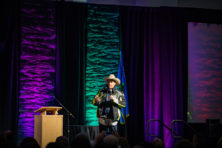Snowy Winter Not a Tourism Driver
- Share
- Tweet
- Pin
- Share
An analysis of past room tax reports, sales tax revenue and weather data suggests that a snowy winter doesn’t mean much for winter tourism. About ten inches fell on the peninsula in December and skiers and snowshoers were quick to hit the trails with snowmobiles still waiting not far behind.
But the busiest winter since 2009 was 2015-16, which also happened to be one of the warmest and wettest on record.
We looked at lodging occupancy and sales tax revenue for December through February for the past 10 years. We also looked at historic snowfall data from the National Weather Service for the station in Green Bay. Although Green Bay is not Door County, it is the nearest reliable source of data.
The snowiest winter since 2009 was in 2013-14 when 61.1 inches fell. It was also the 7th snowiest winter in history.
The year that followed, 2014-15, was one of the driest in history, recording only 20.3 inches of snowfall.
But between that snowy winter and the dry winter that followed, sales tax revenue increased by the normal growth rate and the number of occupied rooms also increased at just below the normal growth rate. This means a lack of snow for winter activities had no effect, positive or negative, on visitors and spending in the county.
Following that, the 2015-16 winter was the fifth warmest on record and the sixth wettest (rain, not snowfall). Mild conditions made many winter activities difficult.
While cross country ski reports from the 2015-16 winter show January was a good month for skiing, warm conditions kept that window short. Meanwhile, snowmobile clubs could hardly get out in the warmer weather, according to updates from the Door County WI Snowmobiling Facebook page.
Despite these poor winter activity conditions, sales tax revenue compared to the snowy winter two years before increased eight percent, even when adjusted for normal growth rate. Room tax reports also show the highest number of occupied rooms and occupancy rate in the last 10 years of data.
Last winter, 2016-17, when snowy conditions returned to average (43.3 inches), the number of occupied rooms and sales tax revenue for the winter months both decreased.
The data is inconclusive at best, but it doesn’t appear that a snowy winter drives winter tourism more than the normal growth in the county.



